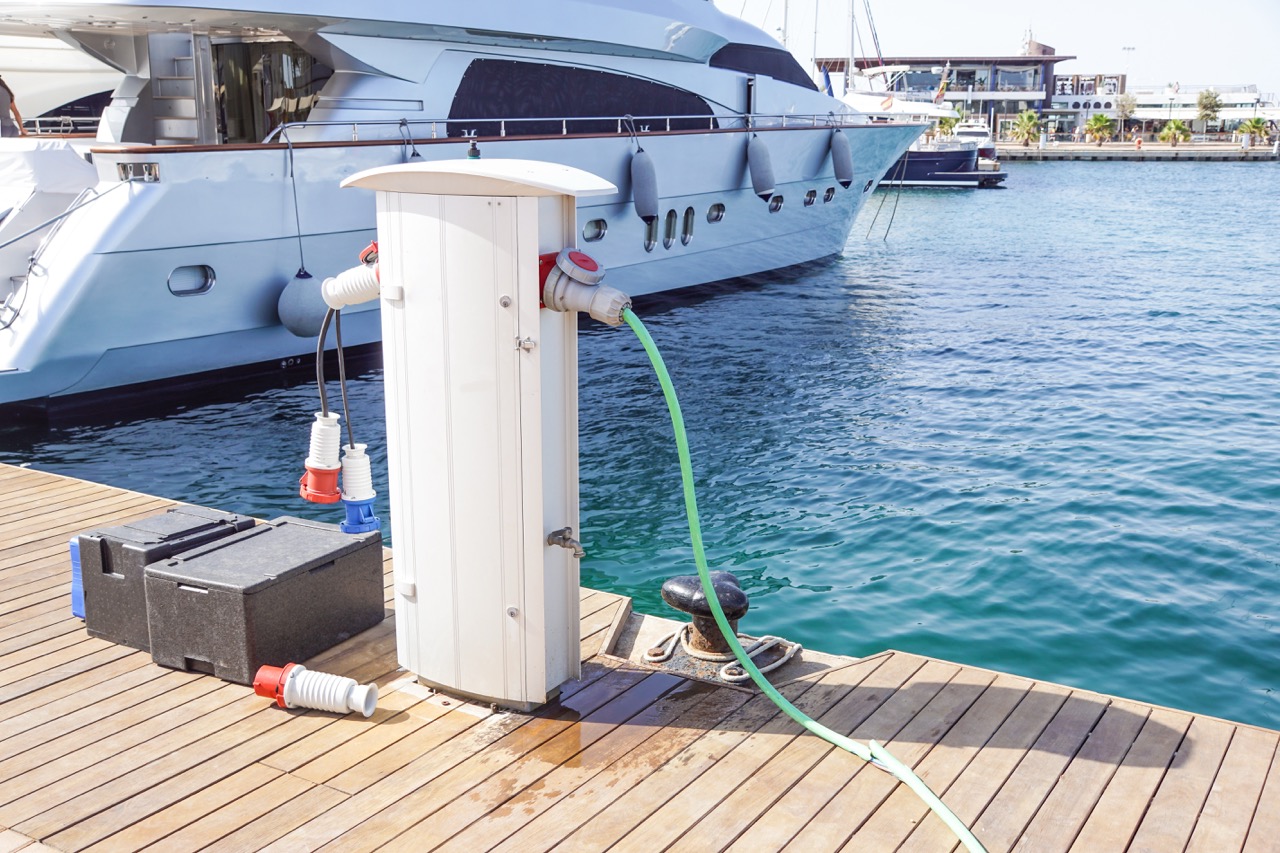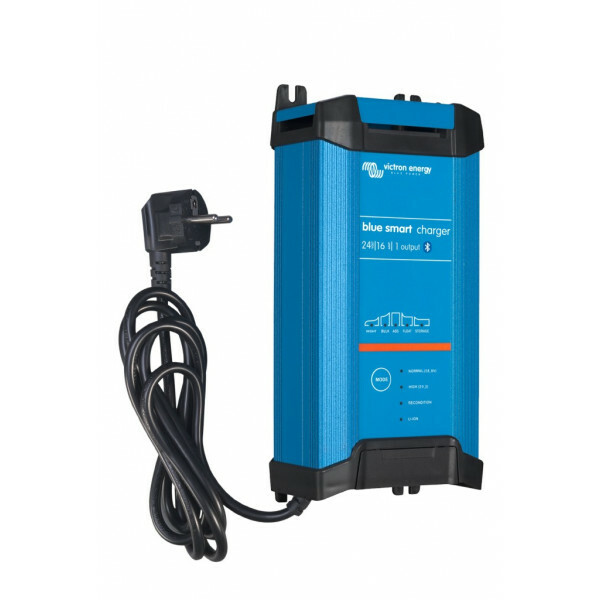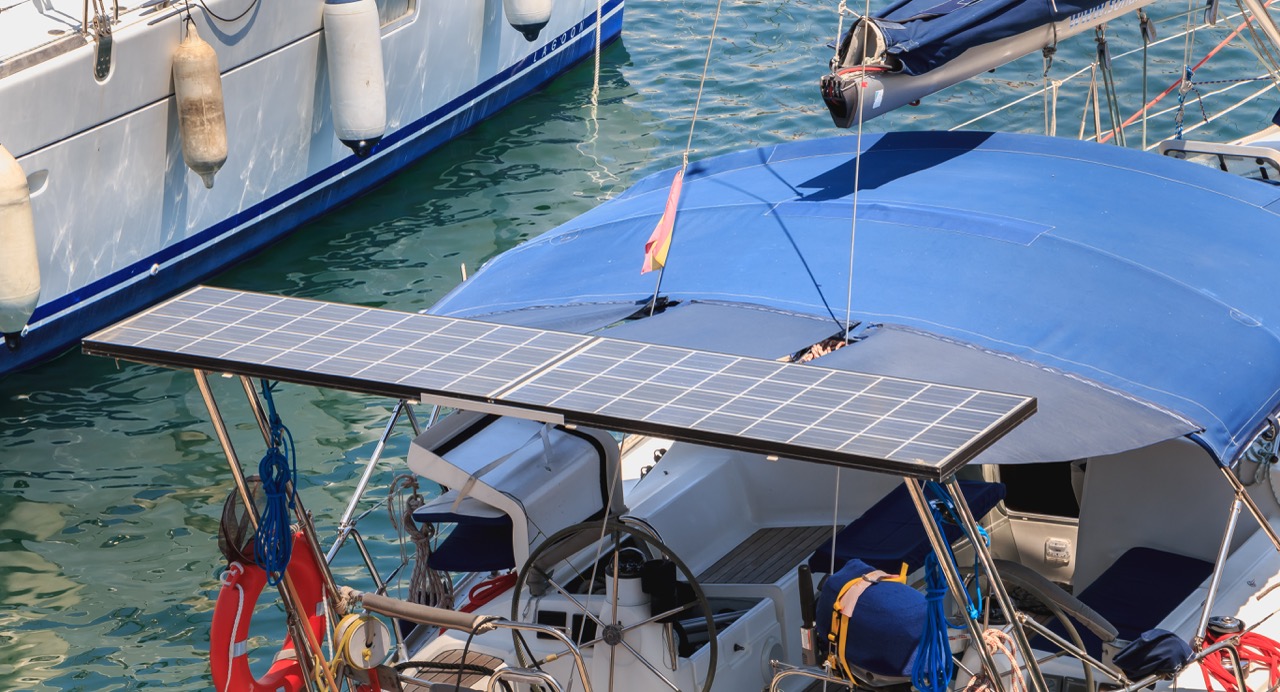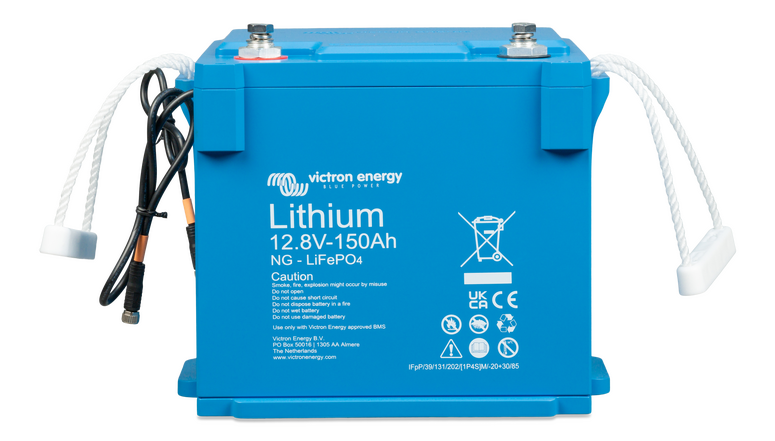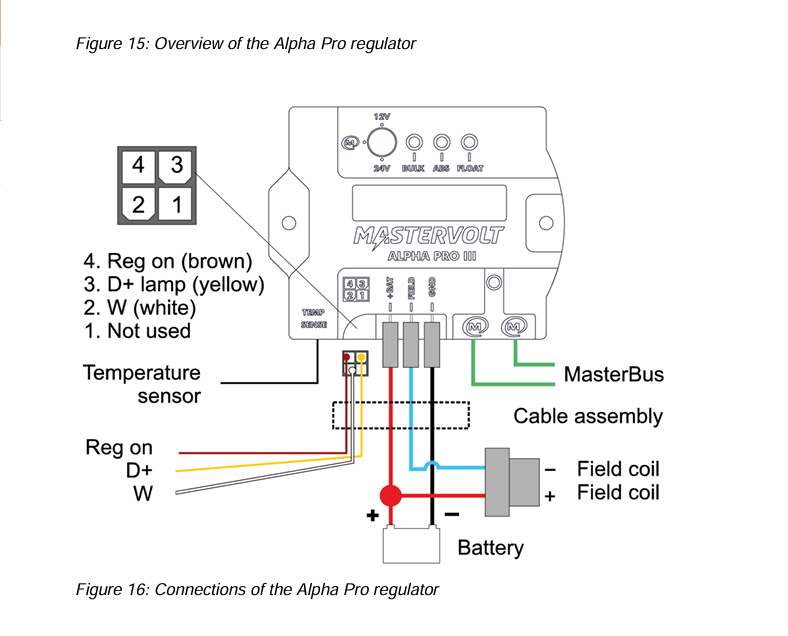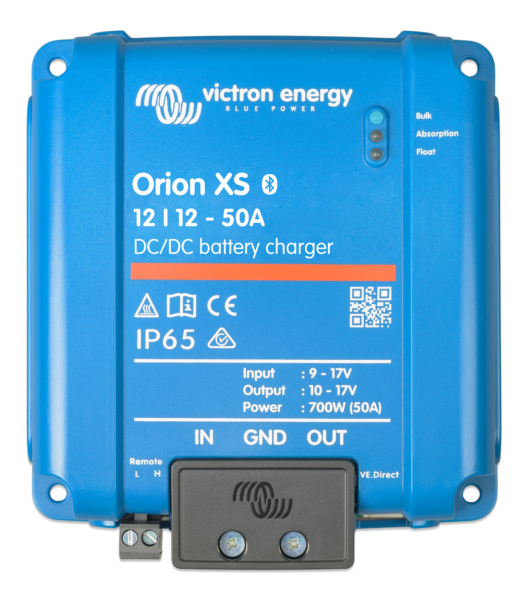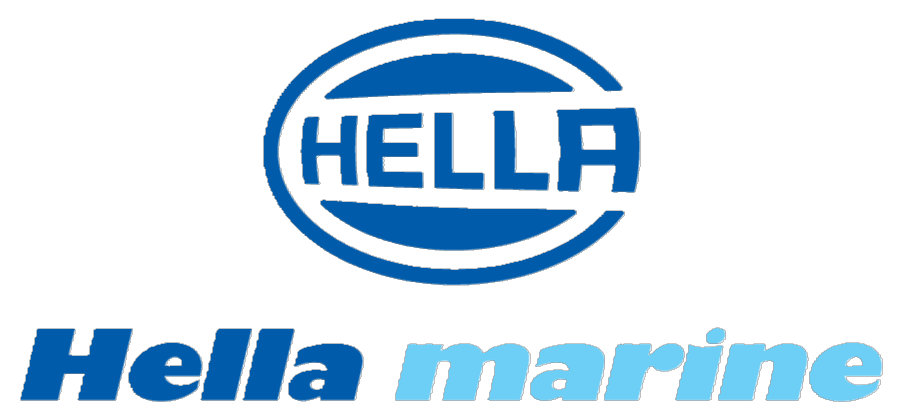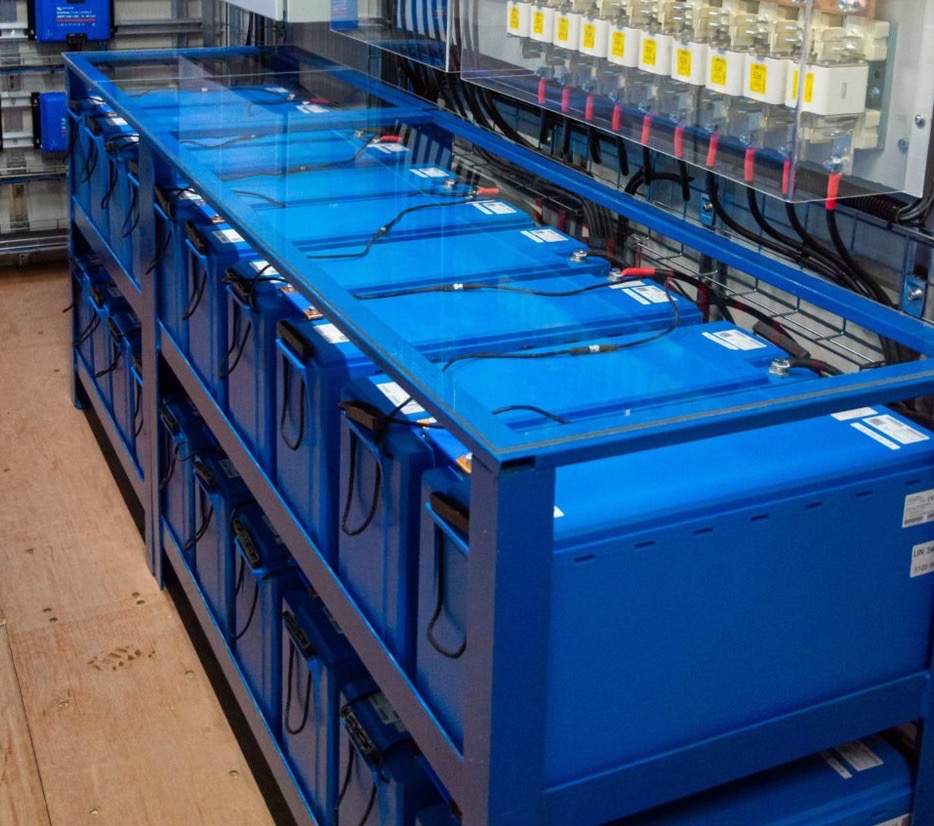
Connecting multiple batteries is fundamentally done in two ways: parallel wiring or series wiring. But what’s the difference between these two methods? And which method best suits your needs? In this blog, we’ll explain everything about safely and efficiently connecting batteries on your boat.
What’s the difference between wiring in parallel and series?
The difference between wiring batteries in parallel and in series centres on how you affect voltage and capacity. Both methods have their advantages and applications.
Parallel connection
When connected in parallel, you link the positive terminals of the batteries together, as well as the negative terminals. The result? The voltage remains the same, but the total capacity (Ah) increases.
- Example: Two 12-volt batteries, each with a capacity of 100 Ah, together provide 12 volts and 200 Ah. This means you can store and use more energy without recharging in between, which is useful for prolonged use.
- Advantages of parallel connection: With a parallel connection, you benefit from a higher capacity without increasing the voltage, which is ideal for systems operating at a fixed voltage, such as 12V installations in motorhomes, boats, and solar energy storage. Because you can store more energy, you can use your battery bank for longer without recharging in between. Additionally, the load is distributed across multiple batteries, which benefits the lifespan and efficiency of the individual batteries. As the voltage remains the same, there is no risk of overvoltage, ensuring sensitive equipment continues to operate safely.
Series connection
When connecting batteries in series, you connect the positive terminal of one battery to the negative terminal of the other. This increases the total voltage while the capacity (Ah) remains the same.
- Example: Twee 12V-accu’s van 100 Ah leveren samen 24 volt en 100 Ah. Dit is vooral handig voor systemen die een hoger voltage vereisen, zoals krachtige omvormers, grote elektrische motoren of industriële toepassingen.
- Advantages of series connection: With series connection, you benefit from increased voltage, which enables more efficient energy consumption in heavy-duty applications. A higher voltage ensures that the current (Amperes) remains lower for the same power demand, leading to less power loss in cables and less heat generation. This makes it a suitable choice for situations where long cables are used or where efficient energy management is essential.
When do you choose to connect in series or parallel?
Your choice between series or parallel connection depends heavily on your energy requirements, the type of equipment you’re using, and your available space on board. When to choose parallel connection?
When to choose parallel connection?
- Extended usage time: Batteries connected in Parallel are perfect if you need power for an extended period, for example, for navigation lights, a fridge, or other onboard equipment. The higher capacity (Ah) allows you to use your battery bank for longer without needing to recharge in between.
- Flexible system expansion: By connecting batteries in parallel, you can easily increase capacity without changing the voltage. This allows for the expansion of an existing system, as long as the batteries are well-matched.
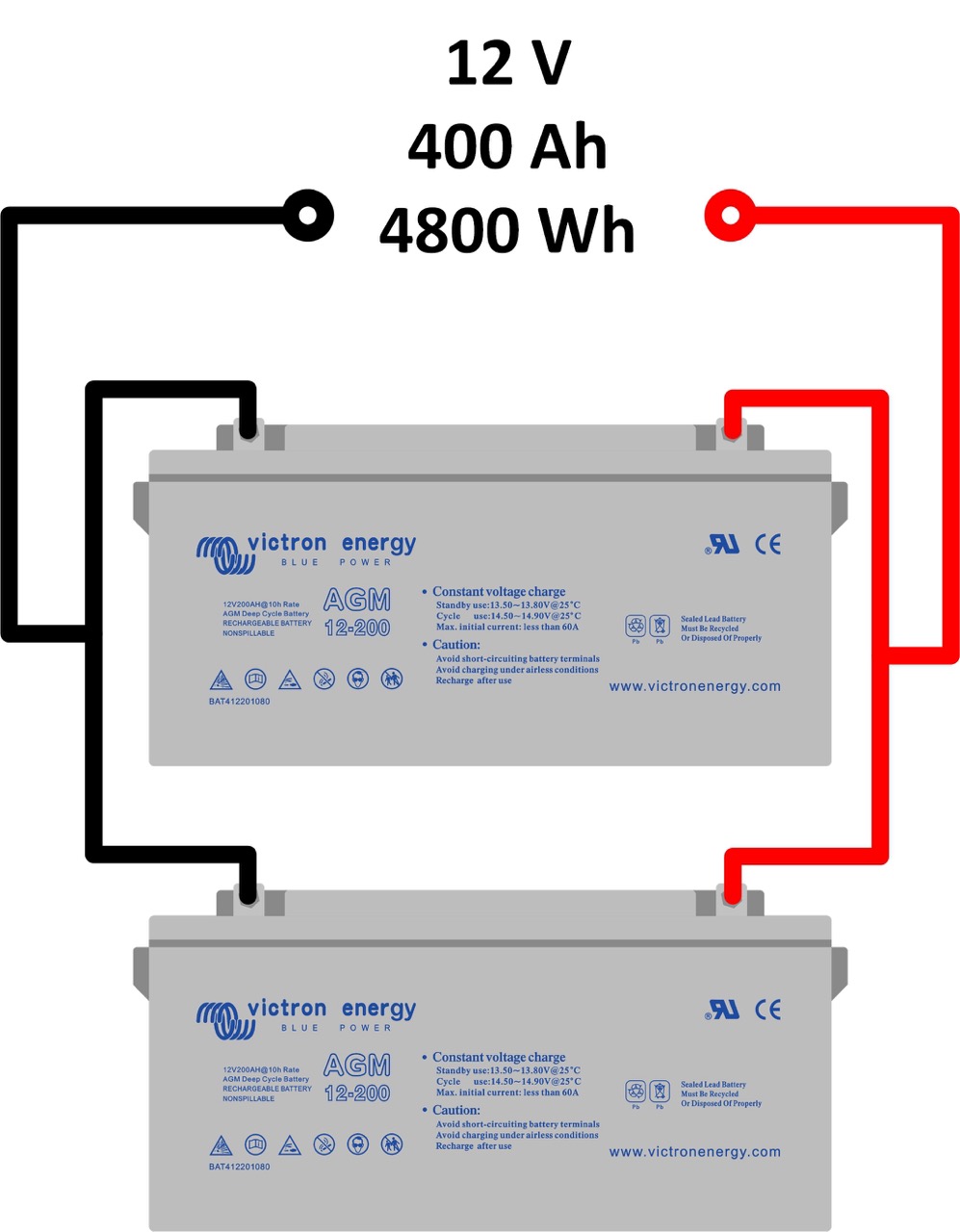
When would you opt for series connection?
- Higher voltage for high-power equipment: Sommige apparaten, zoals een 24V-omvormer, elektrische lier of boegschroef, vereisen een hoger voltage. In dat geval is serieschakeling essentieel.
- More efficient energy use and less cable loss: A higher voltage means you need less current (Amperes) for the same power output. This reduces current loss in the cables and makes the system more efficient.
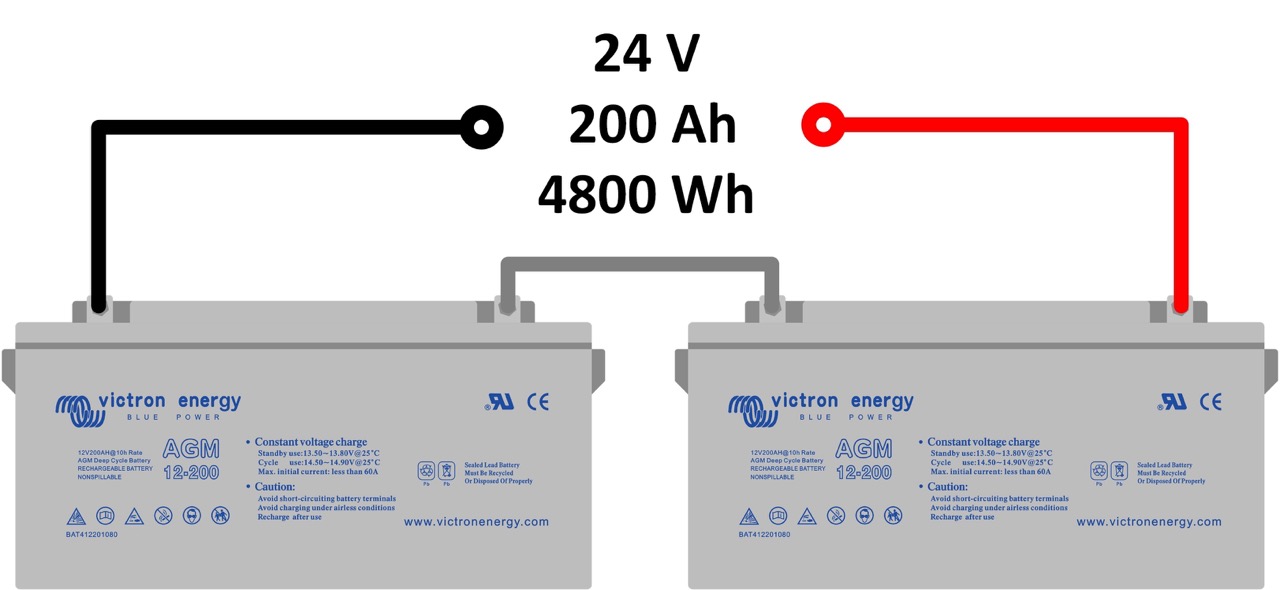
Step-by-step guide to connecting batteries in series or parallel
Connecting batteries correctly is important for both performance and safety. An incorrect connection can lead to damage to your batteries or equipment. Below are step-by-step instructions for connecting multiple batteries in series or parallel.
General preparation
- Check the batteries: Ensure all batteries are identical (make, type, capacity, voltage, and manufacturing date). Also, check that they are in the same state of charge (SOC) before connecting them. This prevents uneven loading and prolongs their lifespan.
- Use the correct cables: Opt for identical, thick cables of sufficient gauge to minimise power loss and ensure stable operation. Ensure the cables are of equal length to prevent unequal resistance and loading.
- Fuses and protection: Consider using fuses or a battery protector to prevent damage from short circuits or overcharging.
Connecting batteries in parallel
- Install the batteries: Place the batteries side-by-side and ensure good ventilation to limit heat build-up.
- Connect the positive and negative terminals: Connect the positive terminal of one battery to the positive terminal of the other, and do the same for the negative terminals.
- Connecting to the system: Connect your load (e.g. an inverter) to the positive terminal of the first battery and the negative terminal of the last battery to achieve even current distribution.
- Check the total capacity: Use a multimeter to verify that the voltage remains correct and that the total capacity (Ah) adds up.

Connecting batteries in series
- Install and check the batteries: Ensure the batteries have exactly the same voltage before connecting them. This prevents uneven load.
- Connect positive and negative: Connect the positive terminal of one battery to the negative terminal of the other.
- Connect the remaining positive and negative terminal: Connect the free positive and negative terminal to your electrical system.
- Check the voltage: Use a multimeter to check that the higher voltage is displayed correctly and that there are no deviations.

Common mistakes and points of attention
Whether you opt for parallel wiring or series connection, there are a number of common mistakes to avoid:
- Dissimilar batteries: Batteries with different capacities, voltages, ages, or chemical compositions can discharge and charge unevenly. This causes imbalance, faster wear, and a reduced lifespan for the battery bank. Always use identical batteries with the same specifications.
- Incorrect cable thickness: Cables that are too thin can overheat, cause extra resistance, and lead to voltage drop. This makes your devices work less efficiently and can cause the battery bank to wear out faster. Choose cables suitable for your system’s current rating and take cable length into account.
- No battery balancer: With lithium batteries, a battery balancer is essential to prevent individual batteries from being overloaded. Without one, the voltage between cells can become uneven, leading to overloading, faster wear, or even failure of individual batteries.
- Incorrect connection method: One of the most common mistakes is to connect all batteries in parallel and then connect one side of the parallel-connected battery bank to the electrical system. As shown in the illustration below:
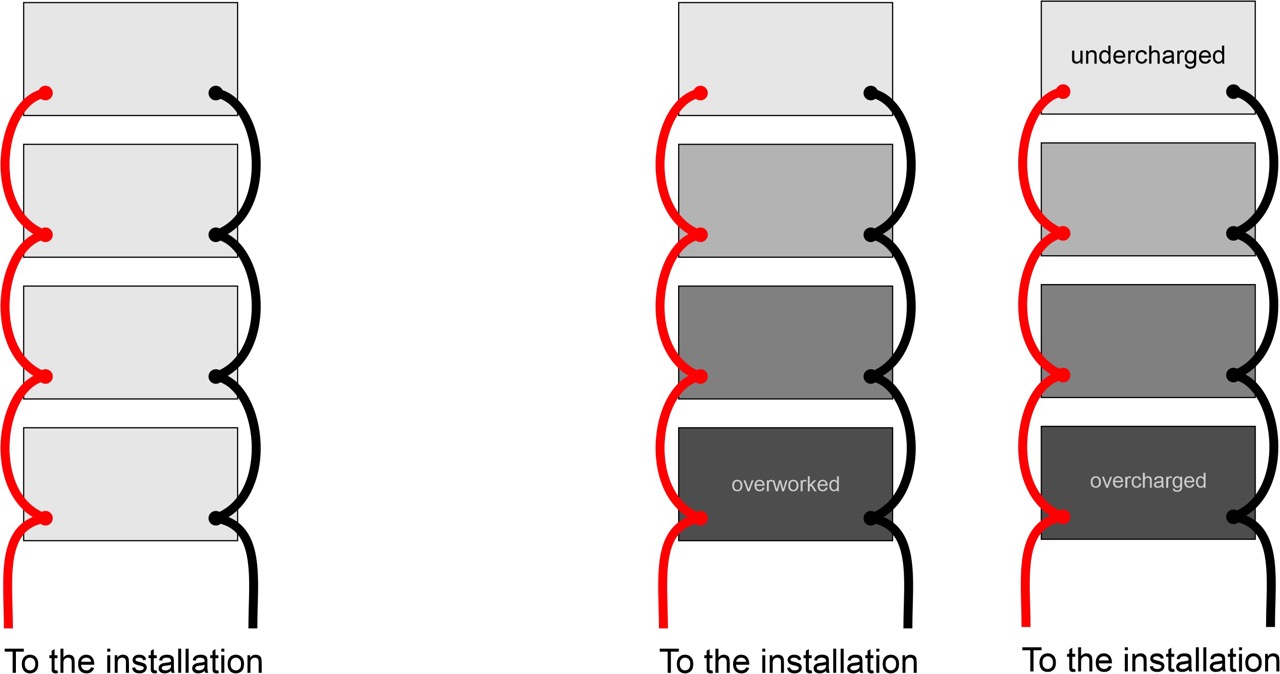
Combining series and parallel
Combining series and parallel connections is a clever way to utilise both higher voltage and greater capacity. This is often applied in large energy systems, such as electric vehicles, solar energy storage, electric propulsion, and multi-system yachts.
How does series-parallel connection work?
Suppose you have four 12V 100Ah batteries:
- Step 1: Series connection – Connect two batteries in series each time (positive terminal of one to the negative terminal of the other). This will give you two sets of 24V 100Ah.
- Step 2: parallel connection – Next, connect the two series sets in parallel (positive terminal to positive terminal, negative terminal to negative terminal). This will keep the total at 24V, but double the capacity to 200Ah.
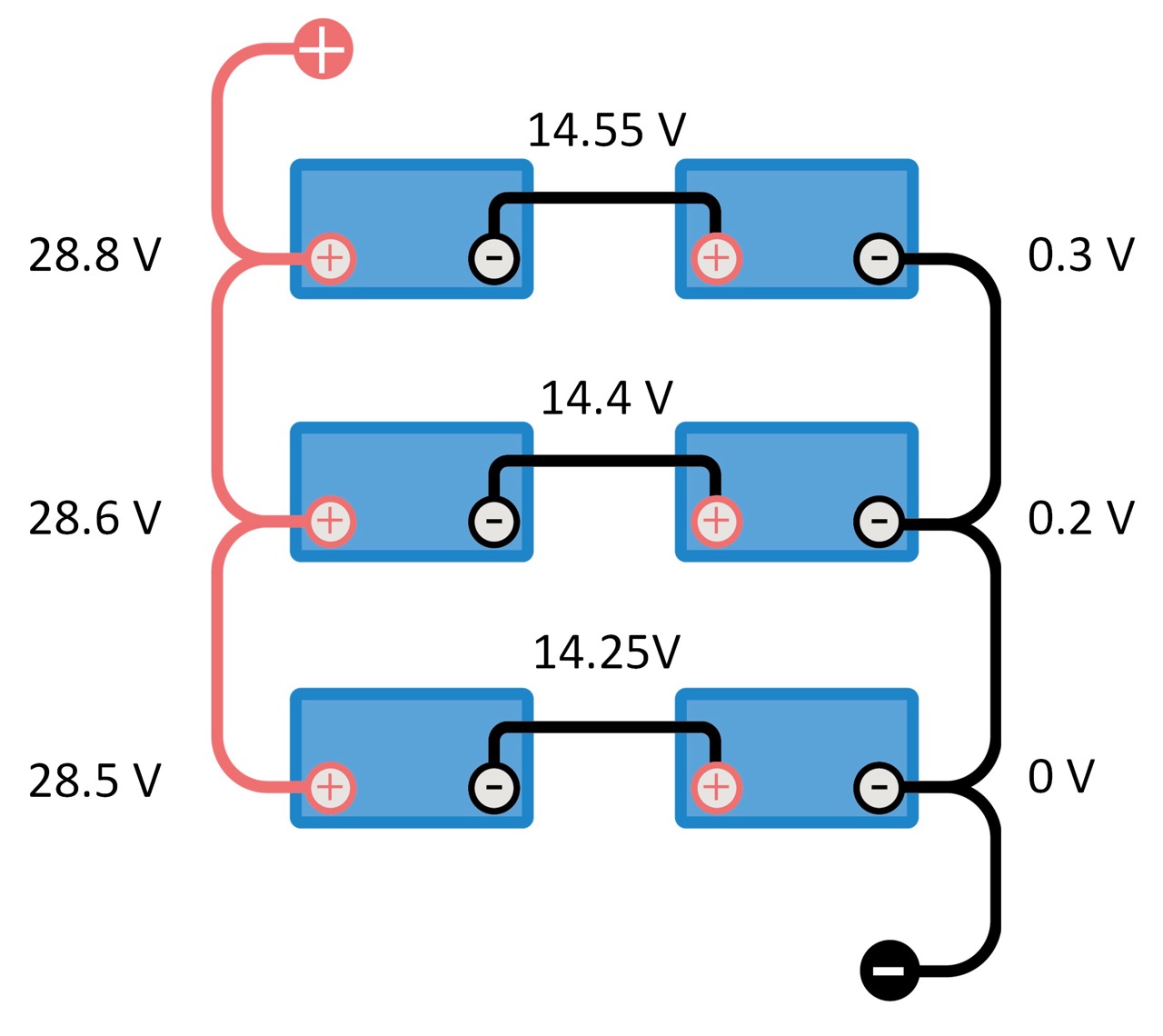
High-quality batteries from AB Marine Service
The choice between parallel or series battery connection depends entirely on your onboard needs. Do you want a longer run time per charge and greater battery capacity? Then opt for parallel connection. Do you need a higher voltage for powerful equipment such as an inverter or electric propulsion? Then series connection is the best option.
Whichever method you choose, ensure you install the batteries correctly, use identical batteries, and consider a battery balancer for lithium systems. By following these steps, you’ll ensure a safe and efficient onboard power supply.
Do you need help choosing or installing your battery? ? Feel free to contact the experts at AB Marine Service for professional advice and high-quality solutions. We’ll be happy to help.


